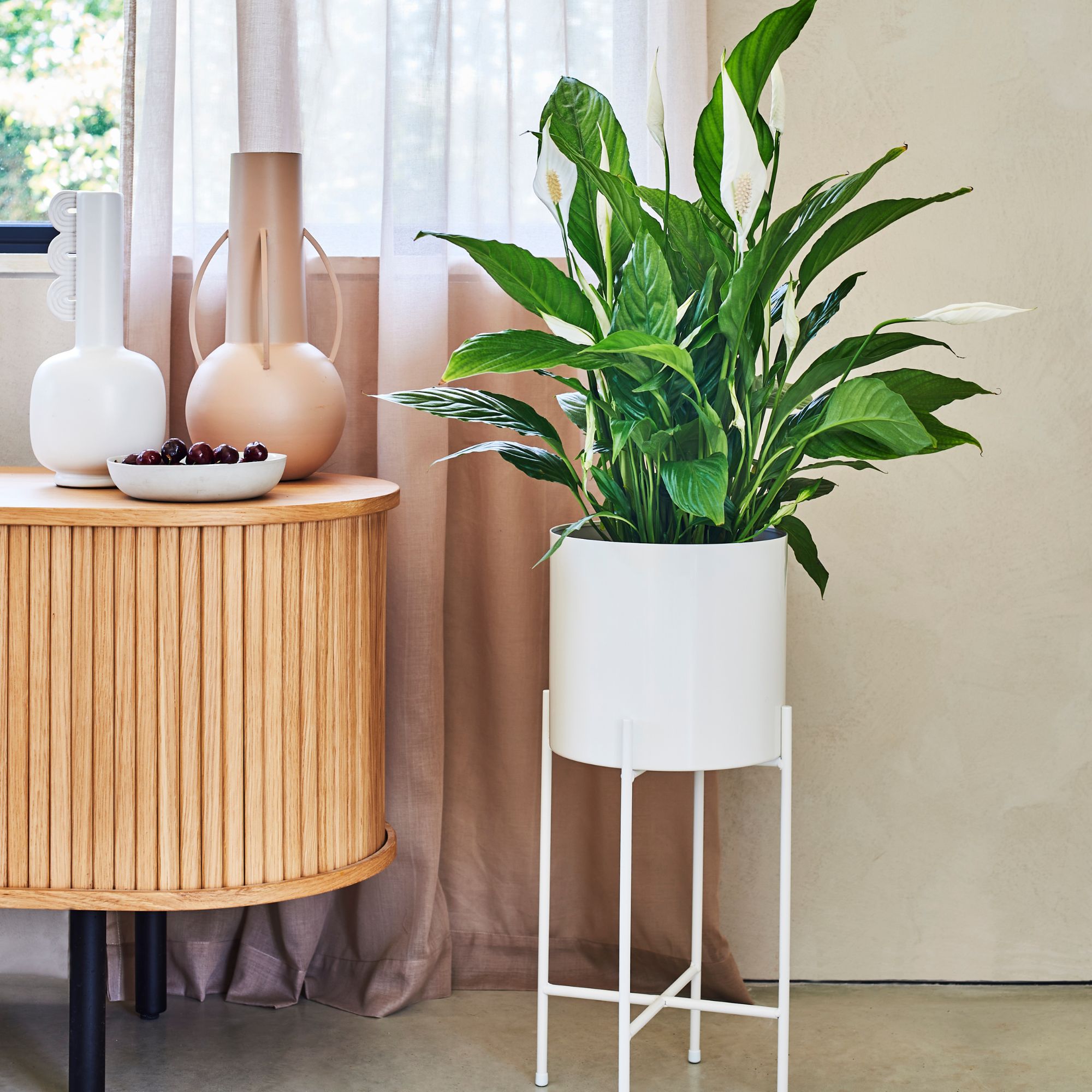
Knowing how to care for a peace lily is a must for any houseplant enthusiast – after all, is it one of the most common houseplants on the market and with the right care can delight for years on end.
Loved for its elegant, long-lasting white blooms, this tropical houseplant is a popular choice for those looking to add more house plant ideas.
The peace lily is not just loved for its good looks – it is also renowned for its air-purifying qualities. ‘In fact, NASA praises its ability to remove pollutants and toxins from the air,’ says Jo Lambell, founder of houseplant company Beards & Daisies.
‘For this reason, it is one of best plant for the bedroom, just pop on your bedside table, as the clean air can positively impact your sleep quality.’
How to care for a peace lily
One of the best houseplants to boost your mood gets its name from its white lily-like blooms, which resemble flags heralding peace. It should not, however, be confused with its colourful counterparts, indoor anthuriums or outdoor calla lilies.
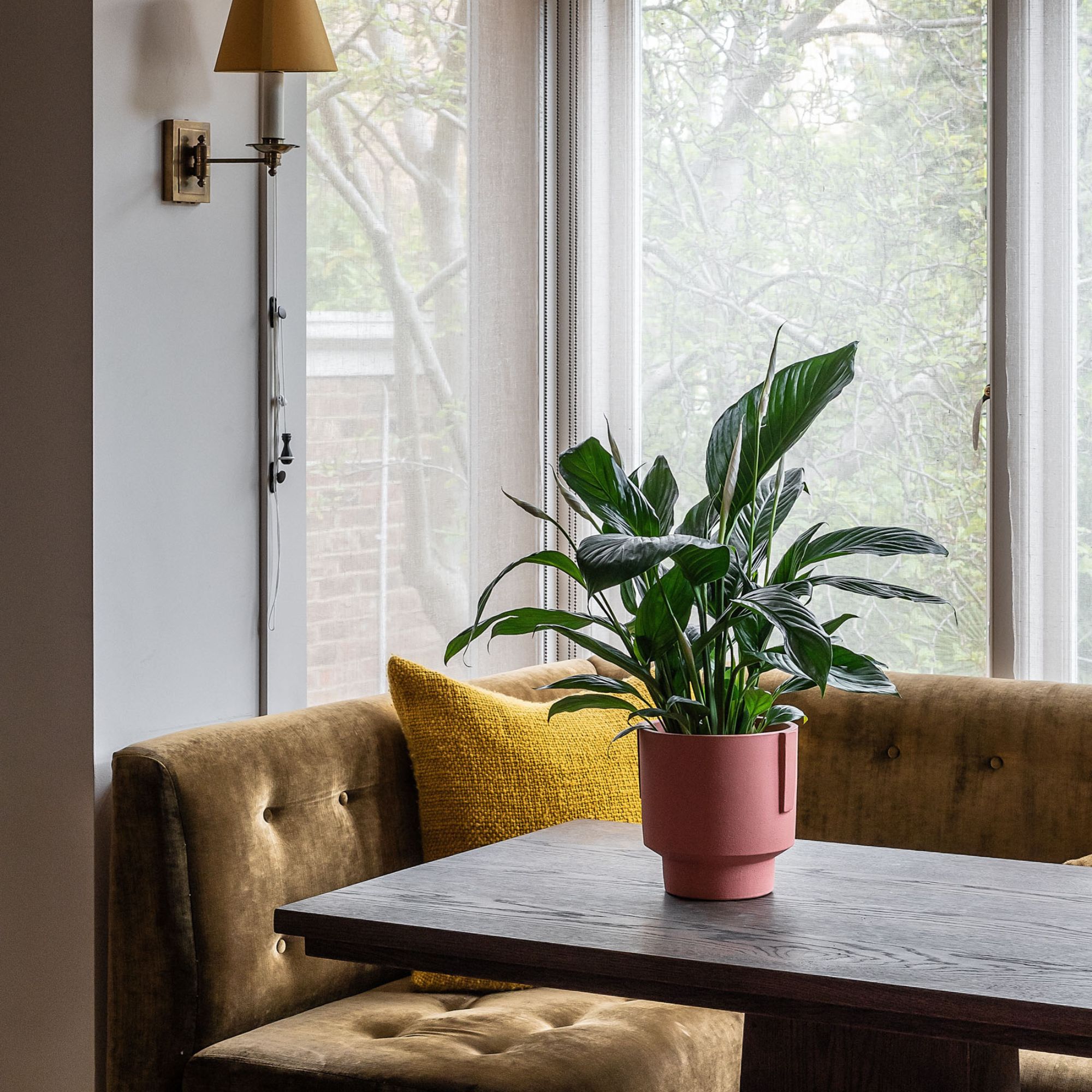
What you will need
- Peace lily plant
- Plastic pot with drainage holes – one size larger than the size of the plant bought
- Decorative pot without holes
- A liquid houseplant fertiliser, for example, Baby Bio Houseplant Fertiliser on Amazon
- A trowel
- Houseplant compost, such as Westland Houseplant Potting mix on Amazon
Where to buy a peace lily
If you have fallen in love with the most Instagrammed house plants and want to add a peace lily to your collection, it is important to purchase from a reputable company.
A plant that has been well cared for in the nursery makes it easier to raise – even if you've already chosen an easy-to-care-for houseplant – as it will be healthy to start with and you won't be immediately fighting signs of disease or neglect.
Best for different sizes
Available in small (12cm pot/approx. 40cm tall), medium (17cm/approx. 65cm tall) or large (21cm pot/approx. 90cm tall) with the option to add a decorative pot. Provides fast carbon-neutral delivery.
Best for gifting
Offering several different bundles – including potted peace lilies with truffles, champagne or in a beautiful plant bundle – you'll find a peace lily gift for every occasion and budget
Best supermarket peace lily
Waitrose offers a variety of peace lilies from a small 30cm plant for your bedside table for right through to the statement 1m tall Sweet Lauretta variety (above)
Where should I keep my peace lily at home?
As one of the best houseplants to boost well-being, peace lilies are suited to nearly every room of the home.
Its air filtration properties make it a great addition to living room house plant ideas and well-suited to bedrooms and home offices.
However, as a tropical plant, a peace lily need to be regularly misted to be placed in a naturally humid environment. ‘These plants love humidity and temperatures between 16-21°C, so bathrooms or kitchens are perfect,’ says Tom Cook, houseplant buyer at British Garden Centres. In fact, peace lilies are one of the best plants to help prevent bathroom mould.
‘Peace lilies prefer indirect sunlight, so a bright spot by an east-facing window would be a great place to home your plant – too much direct sunlight may scorch its glossy green leaves,' adds Dani Turner, customer experience director at Bunches.
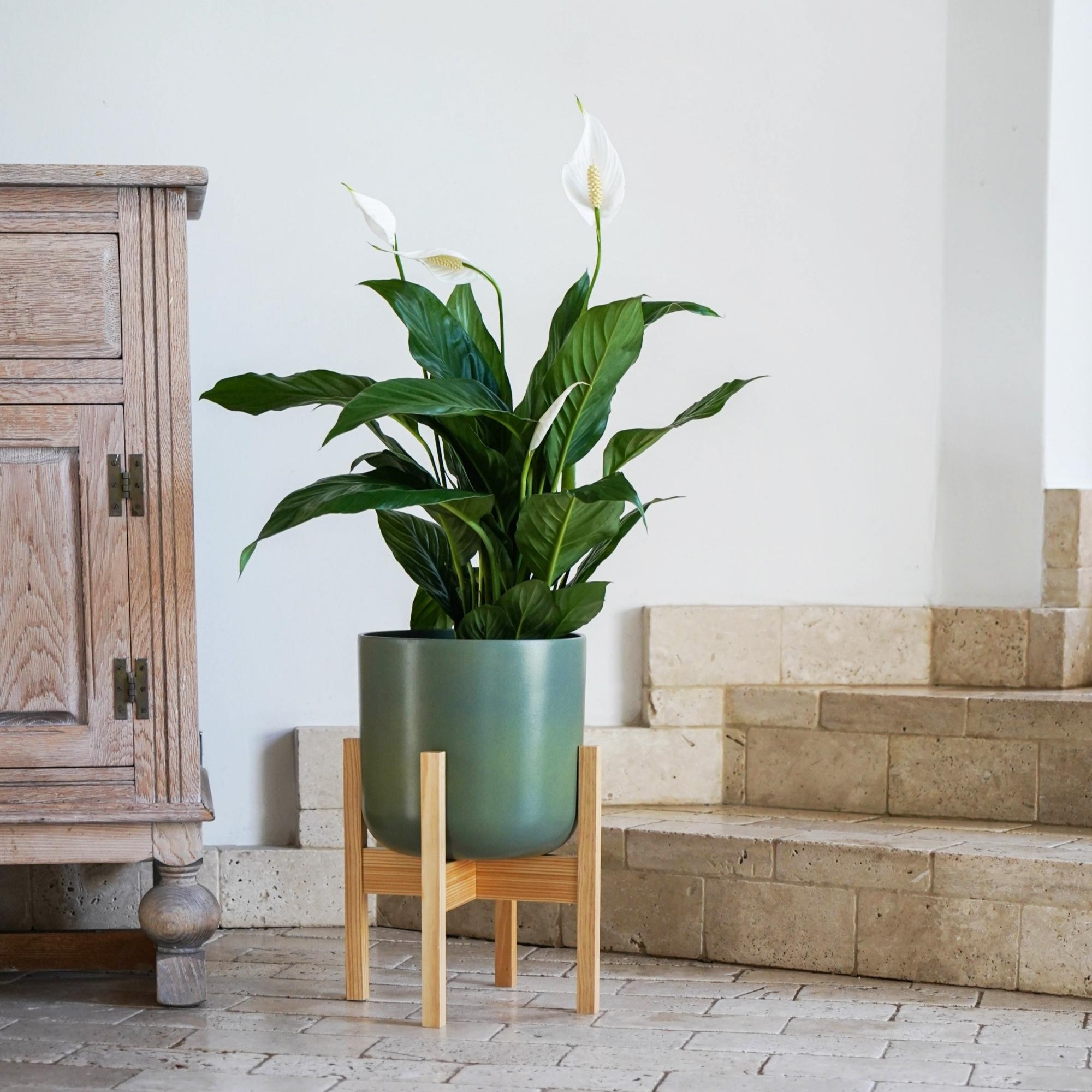
Are peace lilies safe for pets?
Despite its name, the peace lily is not a member of the lily family. While traditional lilies are infamous for being highly toxic to pets, the peace lily does not have the same effect – while still poisonous, ingestion will not prove fatal.
However, it is still good advice to place your peace lily out of reach of four-legged friends – these three pet-friendly houseplants, however, are totally pet safe.
How often do you water a peace lily?
Peace lilies are thirsty plants so need regular watering. Aim for a watering schedule of around once a week, but – as when caring for a snake plant – always test the top two inches of the soil – if it feels damp, wait a few days, if it is dry then water away.
‘If you have a peace lily, we’d be really surprised if you don’t experience some wilting at some point,' notes Jo from Beards & Daisies. 'There are plenty of reasons why your plant might wilt - it is very expressive - but the most common reasons are either under or overwatering.'
One is easier to address than the other. The top two inches of soil of a dehydrated plant will feel dry to the touch, so the solution is to water. You can water from above with a can or from the bottom by filling a tray with water and allowing the roots to absorb what is needed. Don’t let your plant stand in water once the compost feels wet.
If your plant is drooping but the soil is very wet, then it is a sign of severe overwatering. ‘If this is the case, remove from the compost and repot into fresh, dry compost, although if it is too far gone it may not recover,’ says Angela Slater, gardening expert at Hayes Garden World.
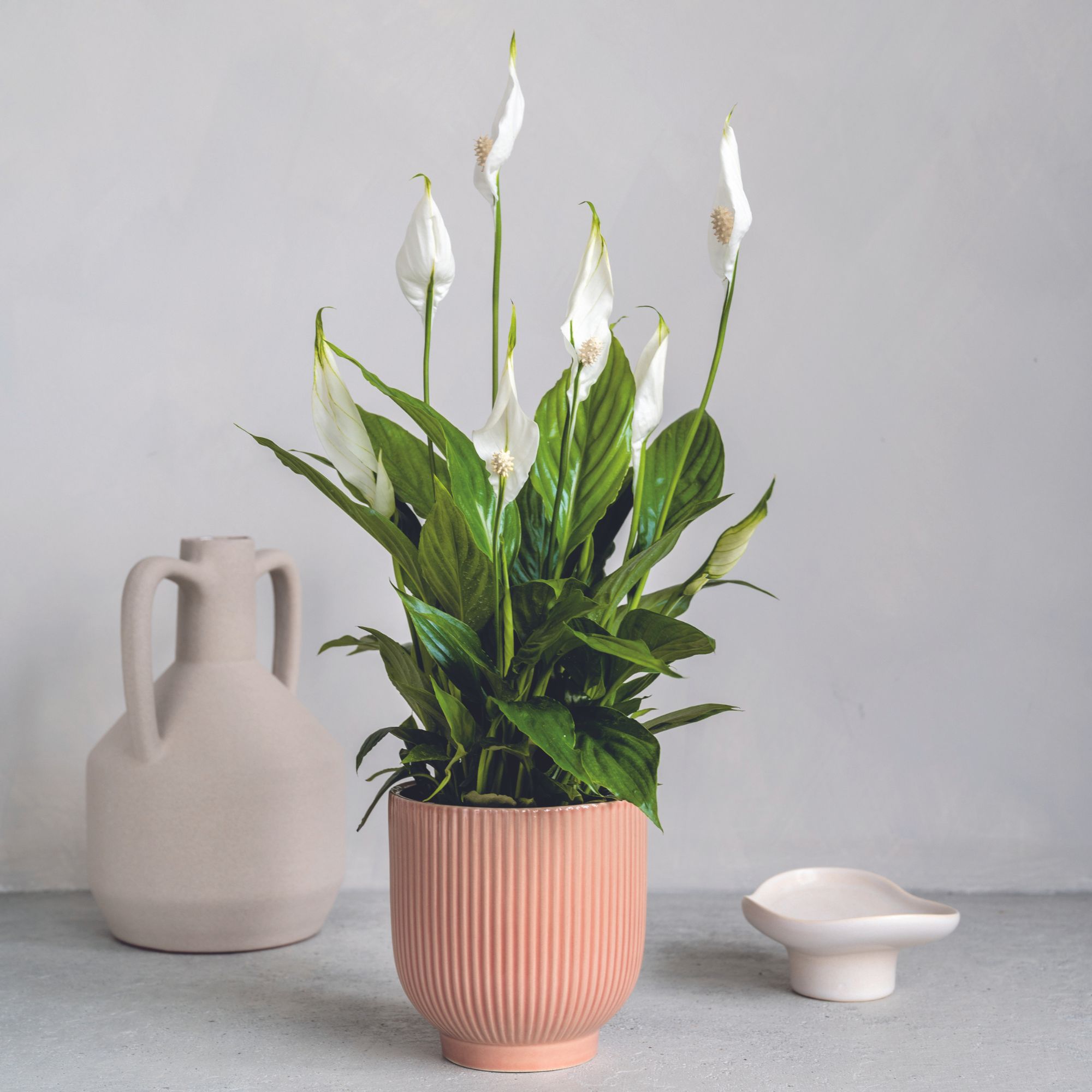
How often should I feed my peace lily?
As with all potted plants, the nutrients in the compost will be quickly depleted, so supplement by feeding.
‘Feed weekly during the growing season – mid-spring to mid-autumn – with a houseplant fertiliser to get more blooms and leaves,’ says Kate Lindley, product manager for Baby Bio. Add to the water according to the instructions, regardless of whether you are watering from above or below.
Improve the photosynthesis of your plant by regularly dusting the leaves with a microfibre cloth.
Should you deadhead a peace lily?
Yes, you should deadhead a peace lily.
Peace lilies usually flower in spring and the blooms can last for around a month. Once the flower has started to fade, deadhead with clean scissors or snips. This will increase the amount of energy in the plant and can encourage reblooming. In some species, as the blooms get older they will go from pure white to a more greenish hue.
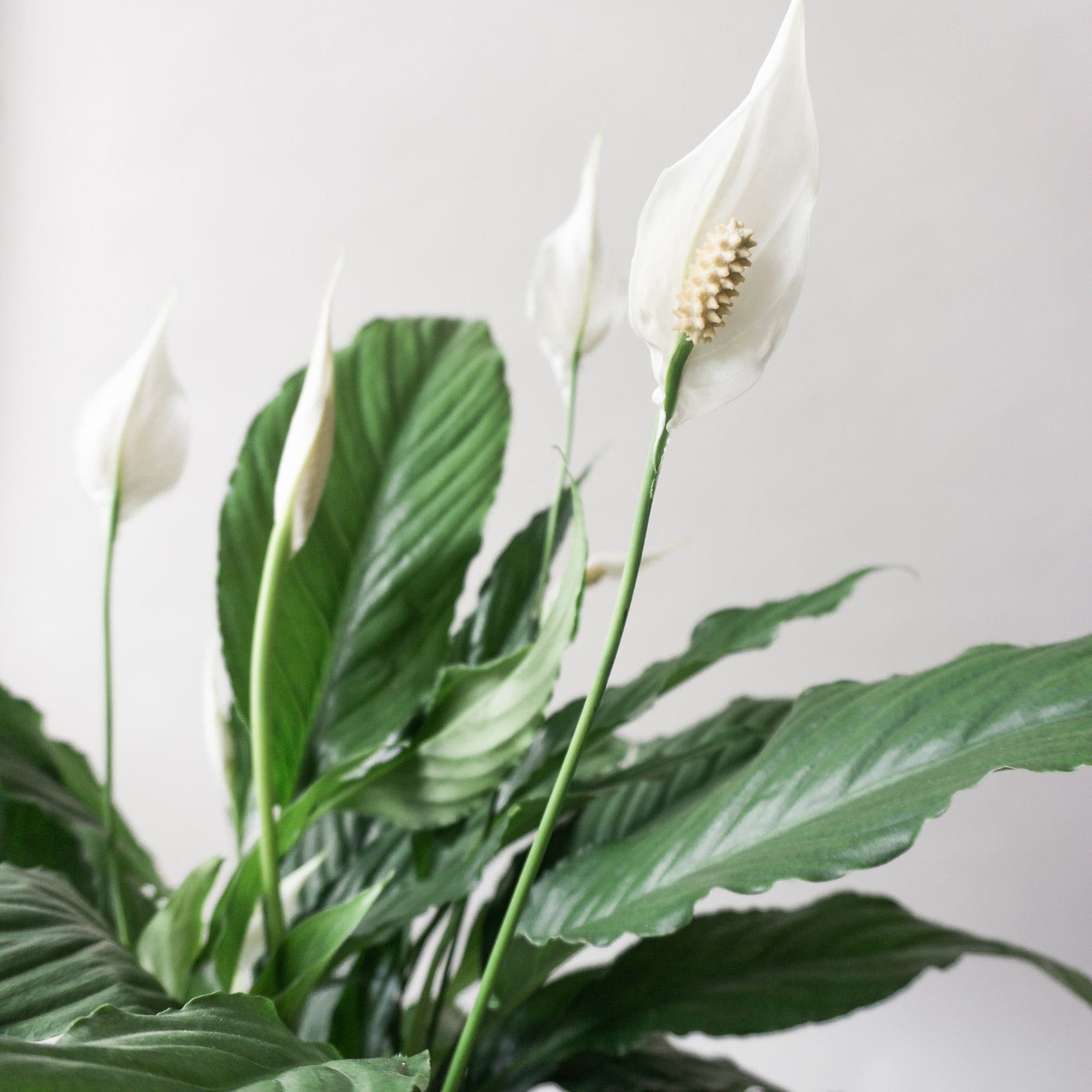
Do I need to dust my peace lily?
Yes, it is a good idea to dust your peace lily – use a microfibre cloth, so as not to damage the leaves. Dusting regularly will help to improve the photosynthesis of the plant and therefore will improve both its health and growth.
When should I repot my peace lily?
You can tell that your peace lily needs repotting when the roots start to become visible through the drainage holes. ‘This is likely to be every year or every other year,’ says Beth Chapman, founder of Leaf Envy. Repot in a slightly larger
pot with good drainage holes and use free-draining houseplant compost.
After having repotted your plant, it is important to place it in a shady spot in order to avoid one of the most common houseplant repotting mistakes.
Repotting is an ideal time to check root health. ‘Once you have freed your peace lily from its pot, remove all remaining compost. If the roots are soft and brown, your plant may be showing signs of root rot,’ says Kate from BabyBio. ‘If there are still some healthy roots, the plant can be saved by trimming roots back to where the root becomes firm and white. Repot with fresh compost.’
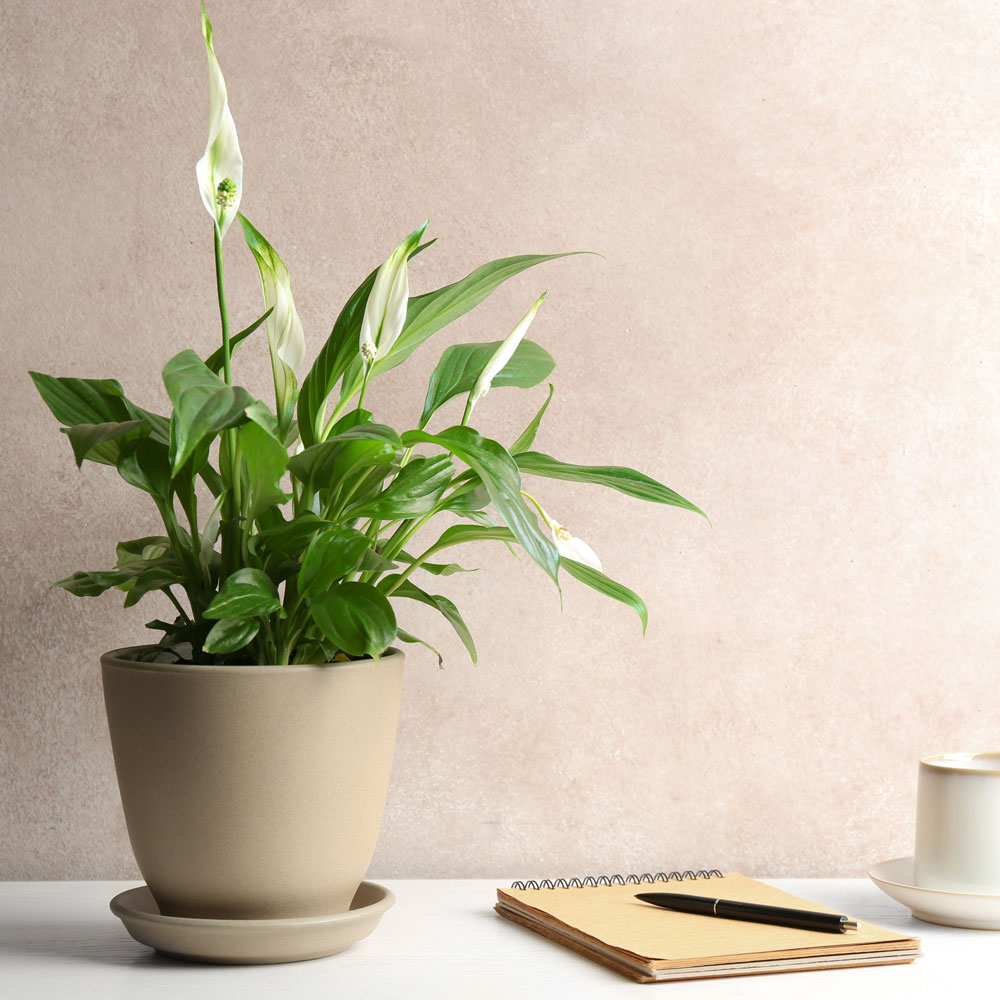
Can I split a peace lily?
The best way to increase your number of peace lilies is by splitting the root ball.
‘Remove the whole plant from its pot and pull apart the sections, making sure you have at least two leaves on each piece,' advises Angela from Hayes Garden World. 'You may have to cut through the roots with a clean, sharp knife. Plant up in good quality potting compost in a small 9cm pot, water and place somewhere warm and light but out of direct sunlight.'
How do I know what's wrong with my peace lily?
Yellowing leaves are a sign of poor drainage or overwatering. Ensure your plant is not sitting in water and reduce the watering frequency. Let the plant
dry out before resuming watering.
Browning leaf tips indicate underwatering or lack of humidity. ‘Every time you water your plant, spend some time misting them with a handheld mister,’ adds Beth from Leaf Envy.
Red spider mites can be sprayed off with a strong jet of water. ‘To prevent, regularly mist with tepid water to raise the humidity. Mites thrive in warm, dry conditions,’ says Angela from Hayes Garden World.
Scale are small ovals bumps on the stems and underside of leaves. ‘Their scaly exterior makes them very stubborn,' explains Angela. ;They are best removed with your fingernail.'
Lack of flowers is most likely due to a lack of sunlight. Move into a sunnier spot – ideally where it will receive four hours of indirect sunlight a day.







